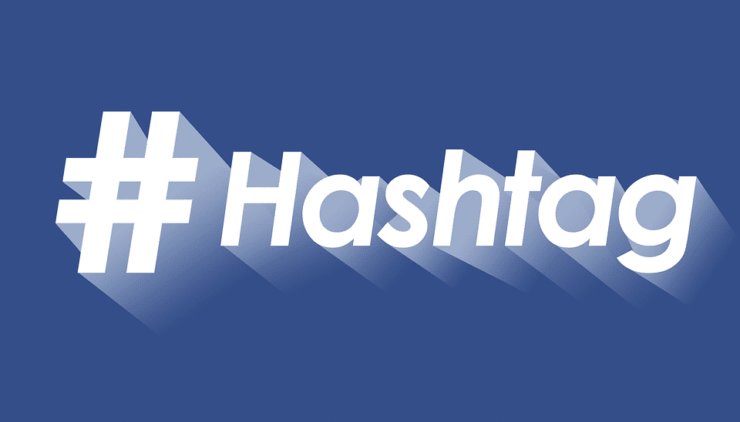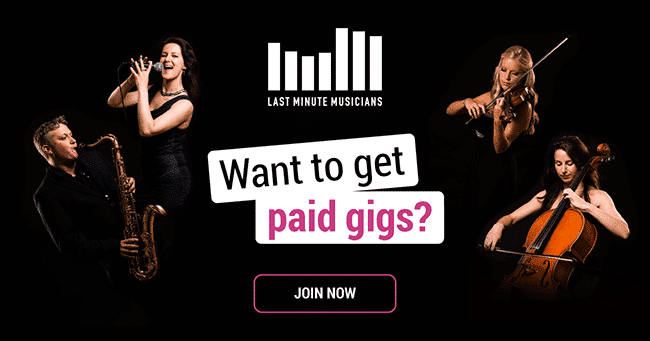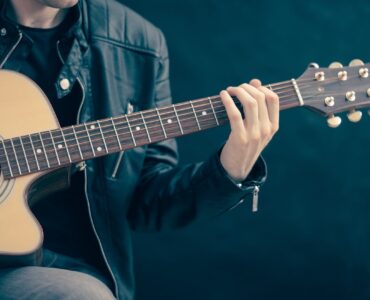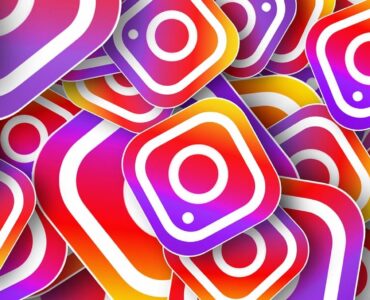Hashtags. Love them or hate them, they’re here to stay. This Last Minute Musicians blog post will give you a few tips on points on the right number of hashtags to use for each platform, the most popular hashtags for musicians to use, and a few examples of the most effective accounts to follow for #inspiration.
1. Study up on what a hashtag is.
In order to understand how best to use hashtags, we need a definition. Here is what Hashtags.org have to say on the subject:
Simply put, a hashtag is an easy way for people to categorize, find and join conversations on a particular topic.
The hashtag is used to highlight keywords or topics within a Tweet, and can be placed anywhere within a post.
Thanks to the member-driven online information site Twitter, the lowly “pound” or “number” symbol “#” has been elevated to a new role. The hash mark, or pound symbol, (#) is now known by social media users as a “hashtag” or “hash tag”. Posts that have the same keywords prefixed with the # symbol are grouped together in user searches, bringing a level of order to the frenzied chaotic world of Twitter.
Hashtags.org
Although this definition is mostly related to the world of Twitter, the principle remains the same across the board for Instagram, Facebook and even YouTube.
A brief history of hashtags
It may seem like hashtags have been around forever due to their widespread use recently, but the credit for the first hashtag use goes to Chris Messina, a social technology expert and former google employee, in August 2007. His first tweet looked like this:
how do you feel about using # (pound) for groups. As in #barcamp [msg]?
— Chris Messina 🏴☠️ (@chrismessina) August 23, 2007
Two days later, another techie, Stowe Boyd, suggested the # symbol be called a hashtag.
According to CBS Minnesota, Messina started using the # symbol and convinced some of his friends to do the same. During the 2007 San Diego fire, people started to use the tracking system Twitter had in place, but the spaces between the words San, Diego and fire made it difficult to track. Messina suggested the hashtag with no spaces.
“That caused other people to see that behavior and they emulated that behavior and it kind of continued in that form,” he said. “At that point, it became easier to use.”
In July 2009 hashtags were officially integrated into Twitter, meaning any word with a # became a searchable hyperlink.
Instagram followed suit in January 2011, and Facebook in 2013, and now use of hashtags is widespread across all social media platforms, and doesn’t look to be going anywhere soon!
2. Think about the opportunities you have to use hashtags as a musician
Now we’ve had a brief overview of the history of the hashtag, we can start to look at how to integrate them into your everyday social media use.
Making the best use of hashtags should start with finding the relevant hashtags to get the most amount of engagement for your target audience. For example, using the hashtag #catsofinstragram isn’t going to get your post in front of the right people, but something like #weddingbandsuk (if you’re a wedding band!) will mean people searching for a wedding band are more likely to see your post and engage with it.
Useful websites:
● http://tophashtags.net/top-instagram-hashtags/
Shows use the top 30 hashtags to use for whichever topic you want to use
● https://ritetag.com/best-hashtags-for/music
Popular hashtags for Twitter and instagram, along with analysis and reports, useful for seeing what’s trending!
For example, with the category “Music” tophashtags.net recommends these:
#music #genre #song #songs #melody #hiphop #rnb #pop #love #rap #dubstep #instagood #beat #beats #jam #myjam #party #partymusic #newsong #lovethissong #remix #favoritesong #bestsong #photooftheday #bumpin #repeat #listentothis #goodmusic #instamusicHowever, if you’re in a function or wedding band, we’d recommend using the following as well:
#livemusic #liveband #instawedding #livegig #weddingband
.. and, of course, don’t forget to hashtag #lastminutemusicians!
3. Learn the ideal amount of hashtags for each social media platform
It’s important to remember that there’s a 140 character limit on twitter, and although there’s no limit, it’s not worth wasting too much of this precious character usage on hashtags. 2-3 hashtags is ideal, but remember the quality of the post, and it’s content, comes first.
Instagram has a 30 hashtag limit on it’s posts, and comments. Although it might seem tempting to use all of these hashtags in order to get the most reach, keep in mind that the reach to audience will drop off dramatically after around 5 hashtags due to recent changes in the Instagram algorithm.
Facebook does not have a limit for hashtags, and with a 63,206 character limit, it might seem tempting to fill your post with as many hashtags as possible – but as they’re a relatively new feature, you may annoy fans and followers if you use too many. One or two will probably be best, as you will still get the benefits of the hashtag, without making your post look too cluttered!
4. Check out some real-life examples
Probably the best way of effectively integrating hashtags into your own work is by looking at some examples. Below, we’ll break down some great use of hashtagging, by platform.
my new track ✨focus✨ is out now! listen/stream/share it here: https://t.co/WOXtGmKGJa 💙 #newmusicfriday pic.twitter.com/o3NwkjraoS
— leo kaLyan (@leokalyan) October 5, 2018
This tweet is simple and effective, using one hashtag, #newmusicfriday to allow people following the hashtag to find the music.
nearly a week ago london made #acompletediversion a success. here is a recap of that night. ||-// https://t.co/TMDz7SsjrX pic.twitter.com/ZnllZHyrQE
— twenty one pilots (@twentyonepilots) September 18, 2018
This hashtag is attached to all of Twenty-One Pilots’ tweets about their tour, allowing and promoting fans to get involved with the conversation about it!
RELENTLESS.
— ARKELLS (@arkellsmusic) August 27, 2018
First single from RALLY⚡️CRY. Tomorrow. #ArkellsRallyCry pic.twitter.com/PFb5YVGhr5
The Arkells use the #arkellsrallycry to promote their upcoming album with maximum effectiveness, even using the hashtag across different platforms!
This post uses only a few hashtags, relevant for the audience that is trying to be reached.
Simple and effective, this uses a solitary hashtag to enable followers to copy it onto their own posts.
Even when you’re as big as Justin Timberlake, hashtags can still be your friend! Again a simple #motw is used to promote the tour and album.
Due to it being new to the platform, it can be tough to track down individual post examples, however some bands that effectively use of Facebook hashtagging are:
5. Try and find a unique hashtag
As you may have seen from the examples, unique hashtags related to your band or music can be a great way to get more engagement from your fan base:
DENVER! WERE FINALLY HERE! #24KMagicWorldTourFinale TONIGHT!!!! 🍾
— Bruno Mars (@BrunoMars) September 7, 2018
Bruno Mars recently used the #24kmagicworldtour across all his social media platforms, and although Bruno Mars is a big name artist the same principles can be applied to your own work. Creating a specific hashtag for your album or tour is a great way of enabling fans to make their own posts using the hashtag, using it in photos or videos that they may have taken or concerts, or simply a way of showing they’ve bought the album.
6. Don’t overuse hashtags!
No one needs to see thousands of hashtags cluttering up the end of a post. Try and go for quality over quantity, or use spaces and new paragraphs to put the hashtags under the “see more” tag on your post.
7. Remember, the quality of your content is key for engagement – not the number of hashtags.
It’s all very well getting your content in front of people, but if what they find isn’t interesting, relevant, or is just plain spam, no one is going to want to engage with it. Don’t flood a mediocre post with hashtags and expect your audience to automatically engage with it.
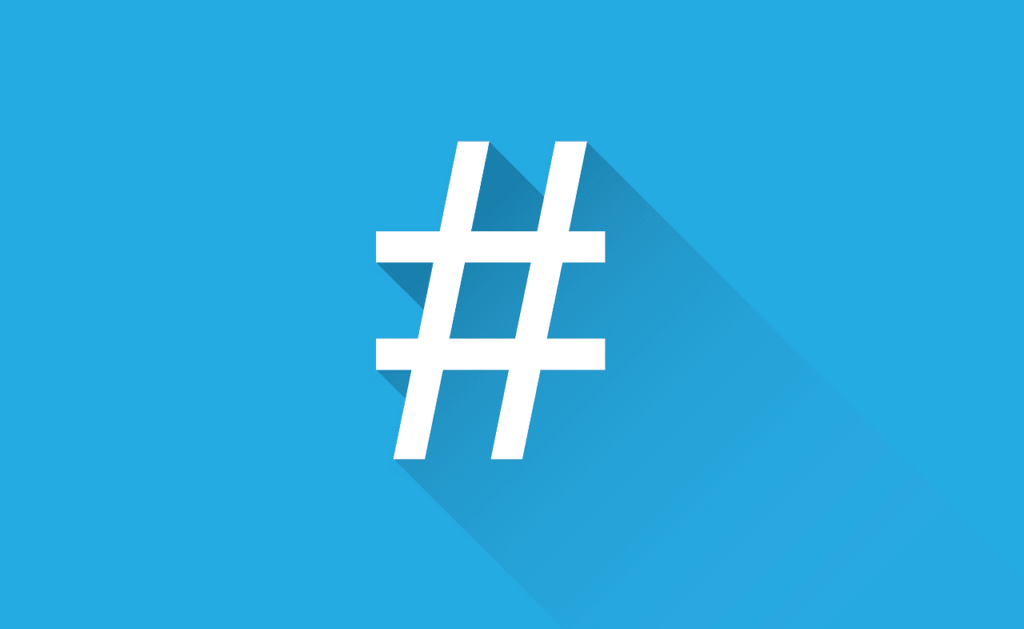
8. Follow big name artists and watch how they (or their team!) use hashtags to get fans engaged.
Follow your favourite artists, preferably in a similar genre to you, and watch what works well for them. You never know, using similar tactics might work for you as well. After all, the same principles will probably apply, regardless of the size of your following.
9. If you create a new hashtag, consistently use it across all your social media platforms.
Consistency is a key element of hashtag use. If you’re looking to get something trending, then using the same hashtags across all of your platforms will be one of the best ways to help kickstart it.

10. Keep on reading
Reading general information on social media is bound to help your effective use of hashtags, as it will help put these tips in context. Try reading our LMM guides to Twitter, Instagram and Facebook for more information.
What hashtags have you found effective on your social media platforms? Do you have any examples of really great hashtags for musicians? Post them in the comments below!
Share this:

